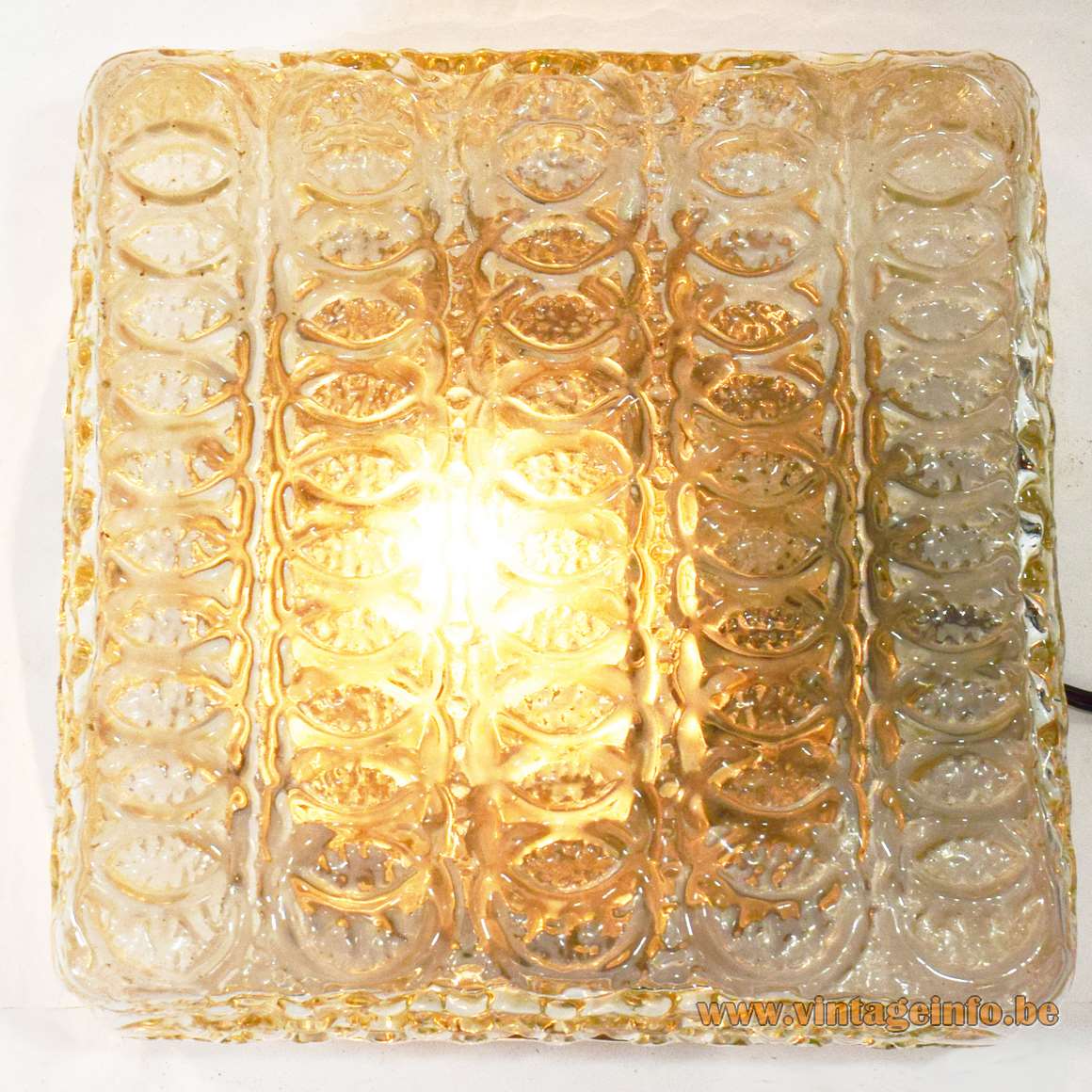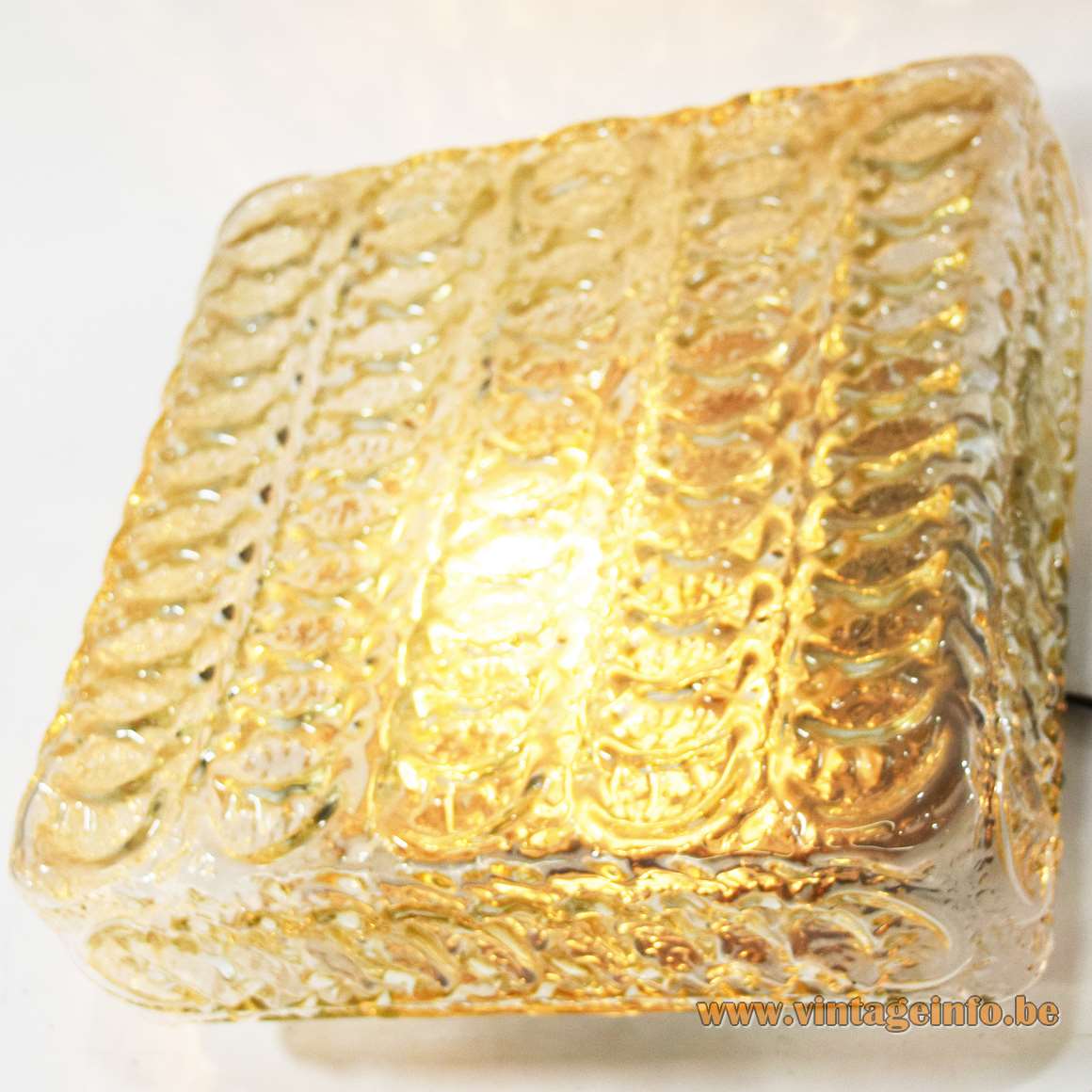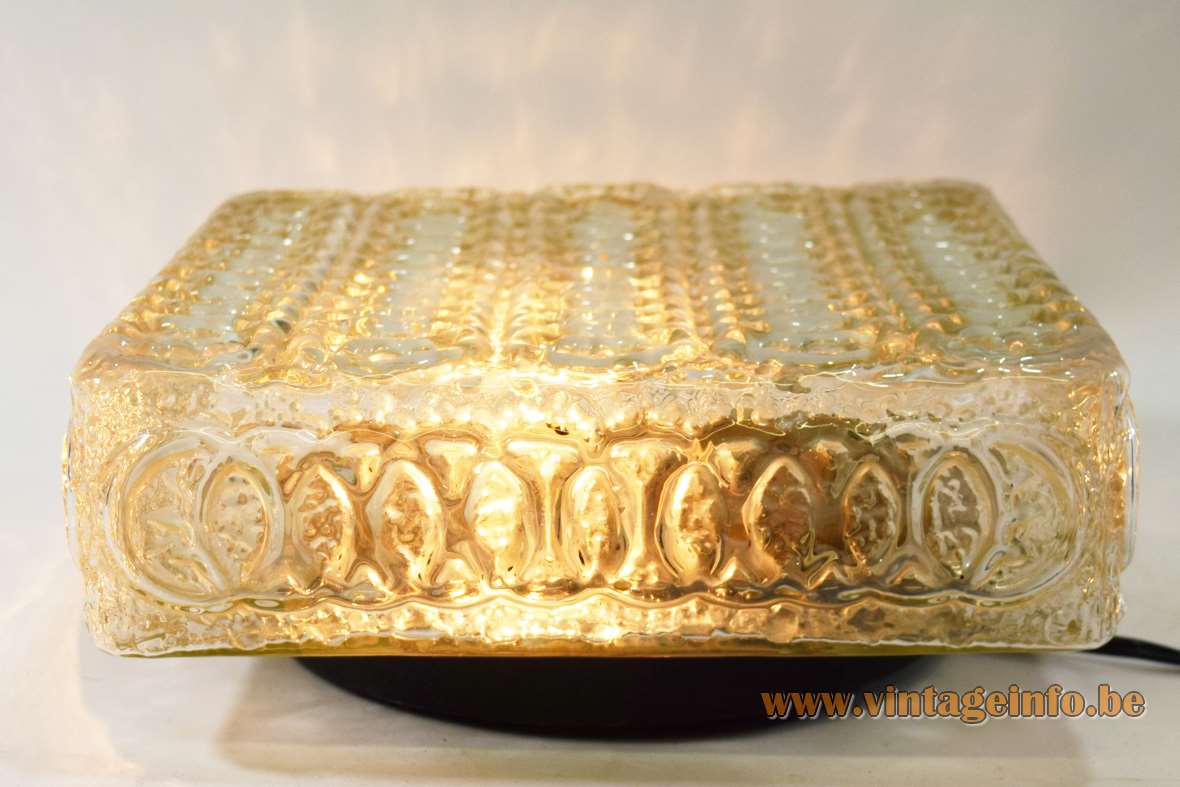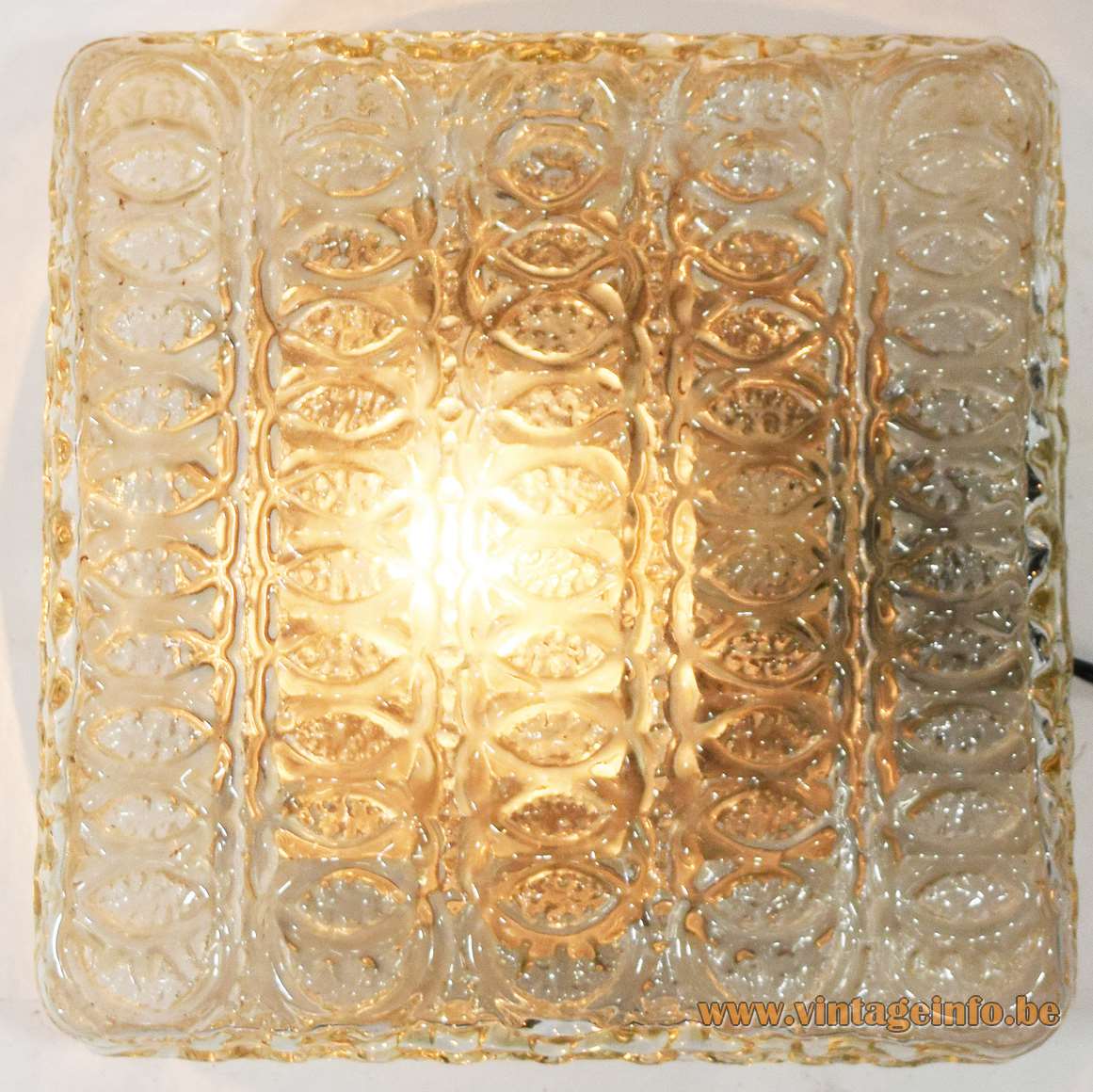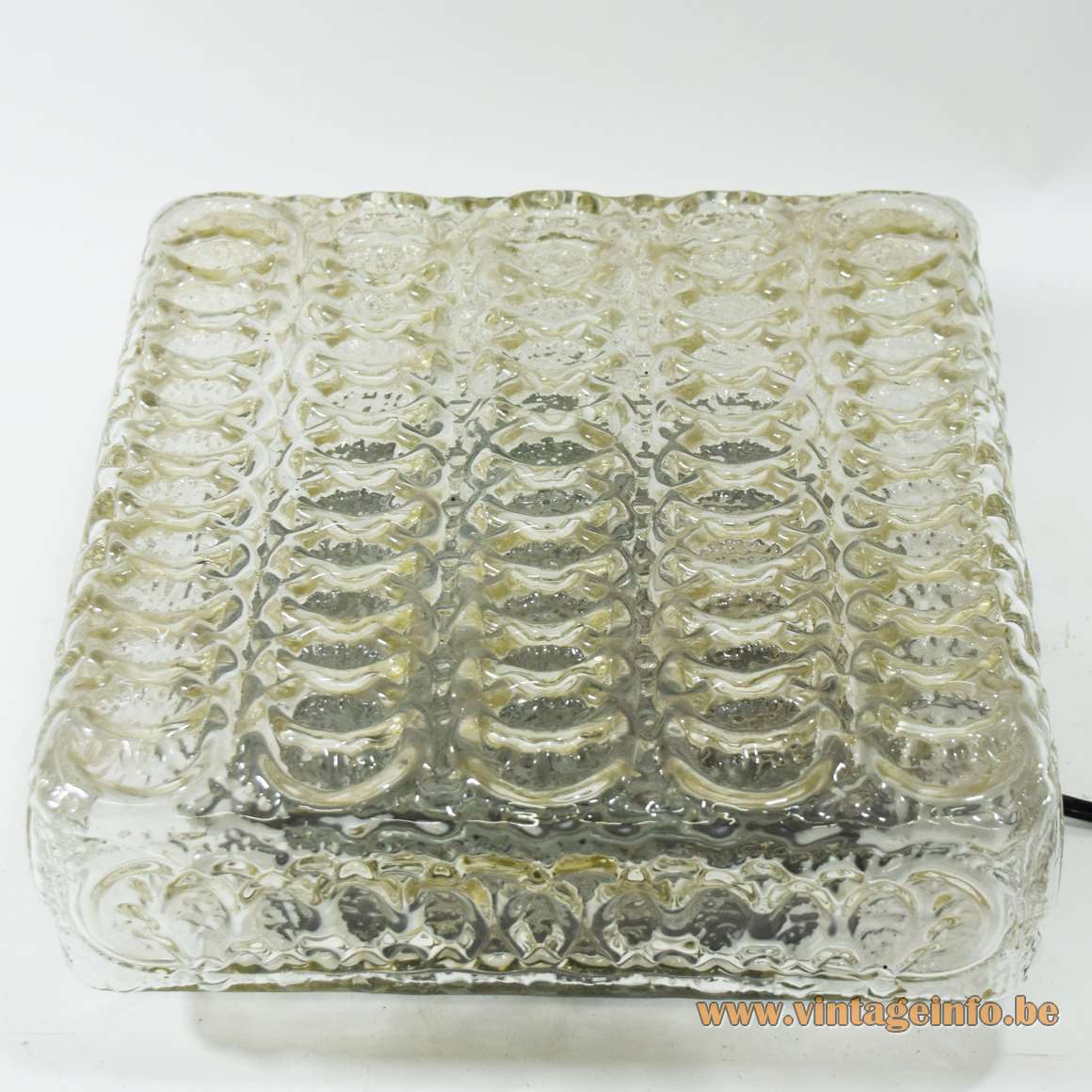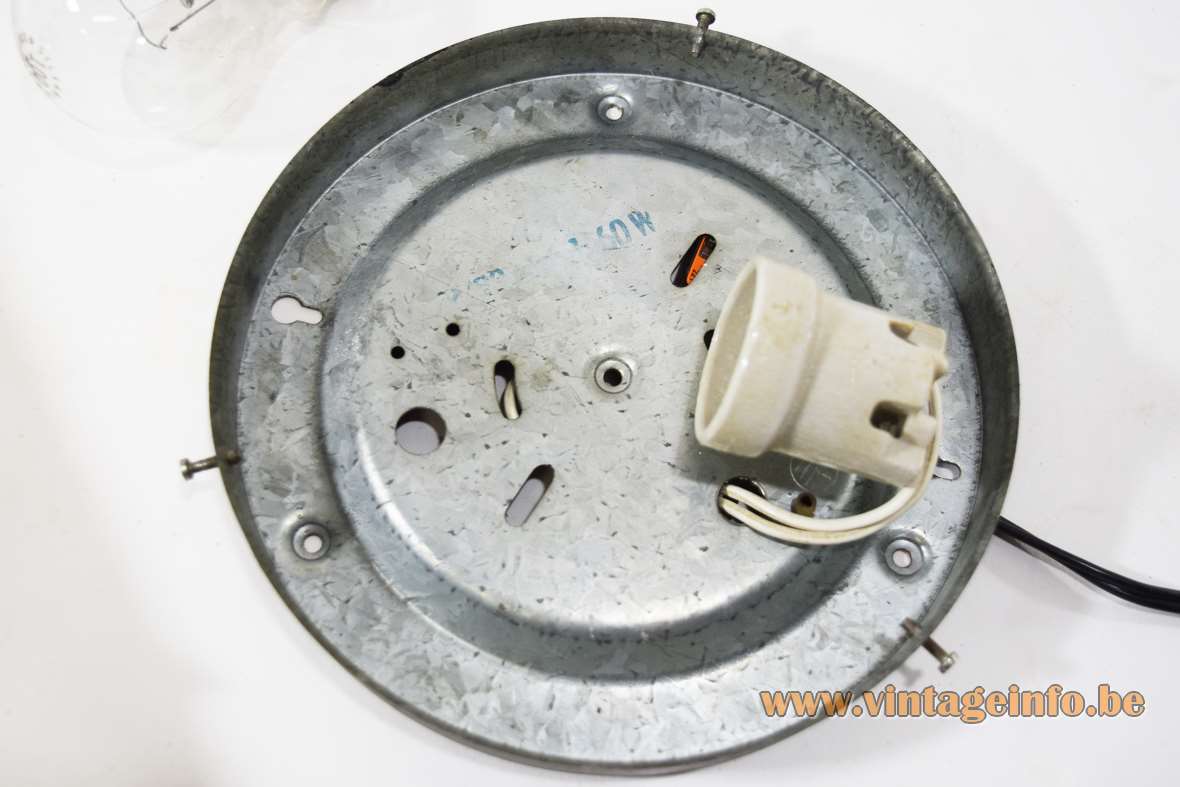Links (all external links open in a new window)
Limburg an der Lahn – Wikipedia
Glashütte Limburg manufactures exclusive interior luminaires with natural gas
Vintageinfo
Rectangular wall lamp or flush mount
Square Amber Glass Flush Mount
Materials: Round galvanised iron wall or ceiling mount. Square amber moulded glass lampshade with an embossed circles design. Porcelain E27 socket.
Height: 8,5 cm / 3.34”
Width: 23,5 x 23,5 cm / 9.25 x 9.25”
Ceiling Mount: ∅ 8,5 cm / 3.34”
Electricity: 1 bulb E27, 1 x 60 watt maximum, 110/220 volt.
Any type of light bulb can be used, not a specific one preferred.
Period: 1960s.
Designer: To be determined.
Manufacturers: Glashütte Limburg, Glashüttenweg 1, 65549 Limburg an der Lahn, Germany – attributed, label is missing.
Other versions: This Square Amber Glass flush mount or wall lamp was made in several forms and sizes. They were/are also used as wall lamps.
No label present, but in all probability produced by Glashütte Limburg. The same German socket was used. Only since the 1970s the company used their well known silver labels. This one has a printed stamp as you can see, but only the 60 Watt is readable.
Glashütte Limburg
Three months after the end of the Second World War in August 1945, graduate engineer Dr. Walter Heinrich submitted his first plans for setting up a glassworks to the American military authorities in Limburg an der Lahn in Germany. Approval for building the factory was issued rapidly because the country urgently needed all types of glass. As a result, the ground was broken for Glashütte Limburg as early as 28 September 1945.
Due to the lack of power and the difficulty in obtaining materials during the immediate post-war period, construction was initially slow. However, on 12 May 1947 the glassworks finally held its first topping-out ceremony, and barely 2 months later, on 7 July 1947, Dr. Heinrich used the blowpipe to take the first glass smelted in Limburg.
Glasshüttenwerke Limburg GmbH
Initially, the company was called Glasshüttenwerke Limburg GmbH and employed 80 people. The production range covered drinking vessels, mugs and many other types of catering glasses.
Production capacities were increased and Glashütte Limburg became Europe’s largest lighting glass specialist within just a few years, employing almost 1000 people.
The rapid expansion reached its limits at the end of the 1950s. The chairman of the glassworks Supervisory Council, Dr. Gottfried Boley, suggested in 1962 that the shares in the company held by the state of Hessen should be privatized.
In the same year, the company succeeded in winning BEGA Gantenbrink-Leuchten OHG, founded in 1945 – which was at that time already one of the largest companies in the German lighting industry – as its ideal partner.
Catalogues
The very first lighting catalogue of Glashütte Limburg appears in 1963.
Six luminaires from the range, presented for the first time in 1964 at the Hanover industrial trade fair, receive awards for excellent design from the Industry Forum and are included in the special exhibition “gute Industrieform” (good industrial design).
40 years after the first catalogue appeared, the range of lamps from Glashütte Limburg has increased to 1800 different products.
Designers
Many lamps of the company were designed by the Designabteilung Glashütte Limburg (design department) or Atelier Glashütte Limburg. Herbert Proft and Heinz-Josef Ohm designed many awarded lamps.
One of the best known designers was Helena Tynell who created several lamps for the company. Her most famous are the bubble glass lamps series. Helena Tynell (1918 – 2016) was married to the famous designer Paavo Tynell (1890-1973).
Awards
The Glashütte Limburg company received the state prize for “Gute Form 1982” (good design 1982) and the “Corporate Design Award 1985”.
Glashütte Limburg received 160 iF Design Awards.
